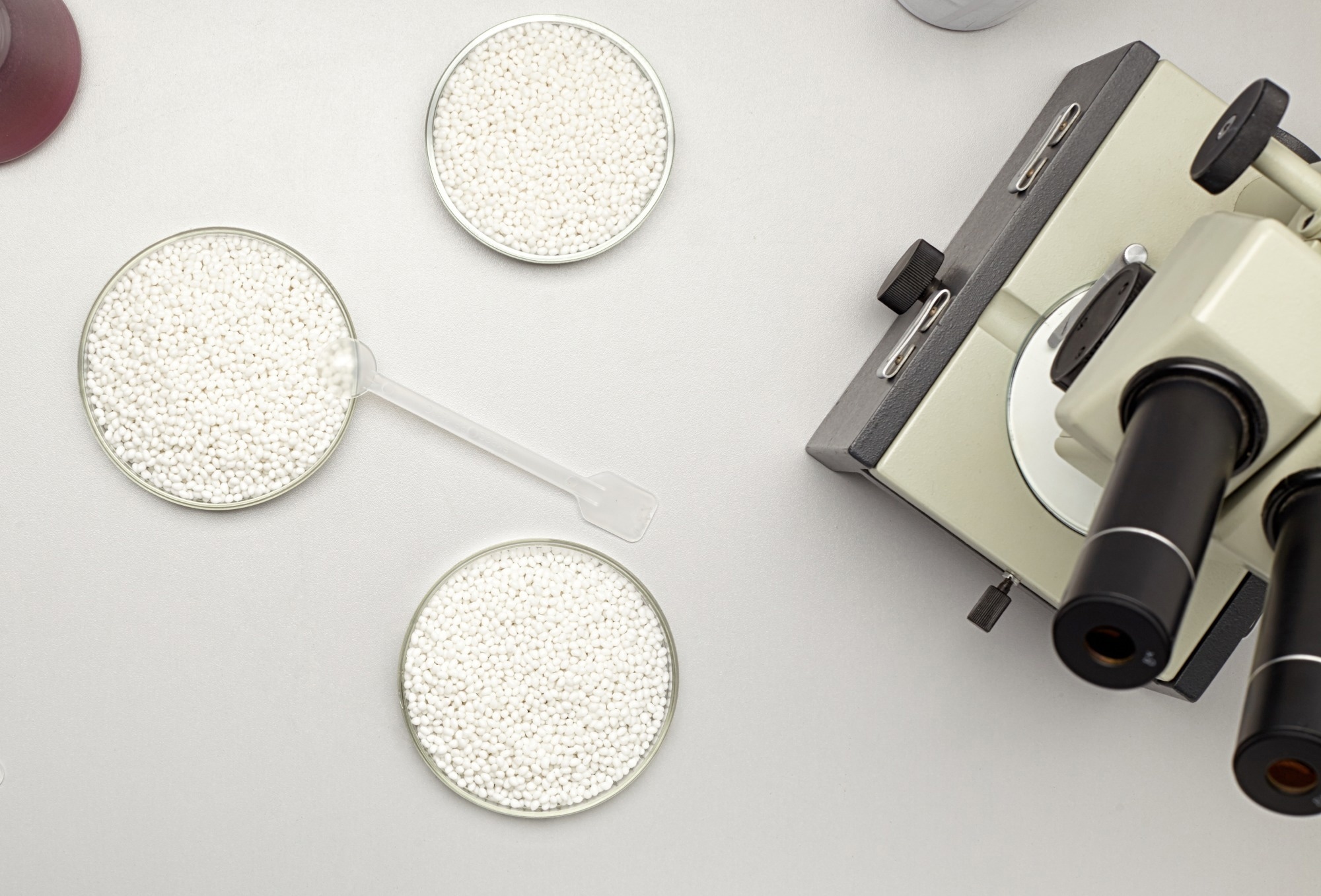A recent review article in Polymer Journal discussed using dynamic nuclear polarization (DNP) with solid-state nuclear magnetic resonance (NMR) to analyze insoluble polymers, such as cross-linked polymers, engineered plastics, and polymer-supported catalysts.

Image Credit: SergeyKlopotov/Shutterstock.com
Background
The rational development of polymeric structures requires a deep understanding at both molecular and macroscopic scales. Several methods are used to analyze the structure of polymers, such as Fourier-transform infrared spectroscopy, Raman spectroscopy, mass spectrometry, X-ray scattering, neutron scattering, solution NMR, and solid-state NMR.
Solid-state NMR is particularly beneficial for non-destructive characterization of polymer structure and dynamics. However, high-field NMR involving nuclei with low natural abundance and small gyromagnetic ratios, such as 13C, exhibit low signal sensitivity, which is inadequate for standard characterization.
Among various methods to improve NMR resolution and sensitivity, DNP has emerged as highly sensitive for investigating solid-state compounds. DNP-NMR employs microwave irradiation in combination with a suitable radical complex (polarizing agent) to induce spin polarization transmission from electrons to nuclei, thereby enhancing the nuclei’s sensitivity.
Crosslinked Polystyrene: Sample Preparation
Cross-linked polystyrene (PS), traditionally synthesized via copolymerization of divinylbenzene and styrene, is commonly used to support ion-exchange resins and heterogeneous catalysts. Standard DNP-NMR methods, such as the glass-forming and film-casting techniques used for linear PS, are ineffective for cross-linked PS due to its poor dispersion in polarizing agent solutions.
To address this issue, an alternative sample preparation method is required, leveraging the polymer’s swelling properties to achieve efficient DNP enhancement. Accordingly, 1,1,2,2-tetrachloroethane (TCE) and dimethylsulfoxide (DMSO) are suitable polarizing agent solutions for DNP-NMR analysis of cross-linked PS.
The affinity of these solutions for the polymer ensures the uniform distribution of bi-radicals, which is crucial for achieving adequate signal-to-noise ratios in DNP-NMR. This approach has shown promising results in the analysis of various alkylammonium salts supported on PS using 15N, making it a viable sample preparation method for synthetic studies.
Poly(phenylene sulfide) Characterization
High-performance engineering plastics are promising alternatives to metallic materials due to their superior mechanical behavior, heat endurance, and chemical resistance. They are also useful as mono-materials and composites with
various organic and inorganic materials.
Developing composite materials requires an in-depth understanding of the polymer chain structure. However, the inherent stability of high-performance engineering plastics, such as polyphenylene sulfide (PPS), makes conventional analytical techniques inadequate for structural analysis. As a result, advanced methods like DNP-NMR are required for characterizing these materials.
PPS does not swell in common organic solvents, making TCE the preferred polarizing solution for DNP-NMR analysis of PPS powder. The sample is prepared using the incipient wetness impregnation method. However, even with this approach, the 13C DNP signal may be weak due to incomplete distribution of TCE within the PPS network.
This issue can be mitigated by heat-treating the PPS-TCE mixture at 60 °C, which significantly improves the 13C, providing reliable structural information for developing PPS-based composites. For example, this method has successfully identified the presence of secondary amine moieties from polymerization solvents like N-methyl-pyrrolidone in the final stages of PPS synthesis, offering valuable insights into the material's composition.
Characterizing Polymer-Supported Catalysts
Polymer-supported catalysts provide practical benefits, such as ease of recovery and reuse, and can be integrated into columns for continuous flow reactions. While solution NMR effectively characterizes molecular catalysts, it is often inadequate for analyzing polymer-supported catalysts, complicating the design of efficient systems.
DNP-NMR has emerged as a valuable technique for directly characterizing catalysts embedded within polymer networks, like PS-supported alkylammonium salt catalysts. Using 15N DNP-NMR, researchers have been able to precisely characterize these catalysts, facilitating the synthesis of other catalysts with optimized structures, such as polyethyleneimine (PEI)-supported iridium.
PEI-supported iridium actively facilitates formic acid decomposition, a method used to recover hydrogen from a movable liquid hydrogen carrier. DNP-NMR studies with 15N NMR and 13C have confirmed a bipyridine ligand and pentamethylcyclopentadienyl group immobilized on the PEI network.
Conclusion
The researchers presented their recent work on solid-state DNP-NMR analysis methods for insoluble polymeric materials. They developed a sample preparation procedure by selecting the most suitable polarizing agent solution based on the swelling behavior of cross-linked PS, which is commonly used in organic synthesis and catalysis.
This sample preparation protocol was extended to high-performance engineering plastics such as PPS, demonstrating its end-group characterization. A precise structural analysis of trace species in polymer-supported catalysts was also illustrated.
The researchers plan to expand the application of solid-state NMR-DNP to hybrid polymers, other polymer-supported catalysts, biodegradable polymers, and surface analysis of chemically treated polymers.
Journal Reference
Tanaka, S. (2024). Structural analysis of polymers via solid-state dynamic nuclear polarization (DNP)-NMR. Polymer Journal. DOI: 10.1038/s41428-024-00965-y, https://www.nature.com/articles/s41428-024-00965-y
Disclaimer: The views expressed here are those of the author expressed in their private capacity and do not necessarily represent the views of AZoM.com Limited T/A AZoNetwork the owner and operator of this website. This disclaimer forms part of the Terms and conditions of use of this website.